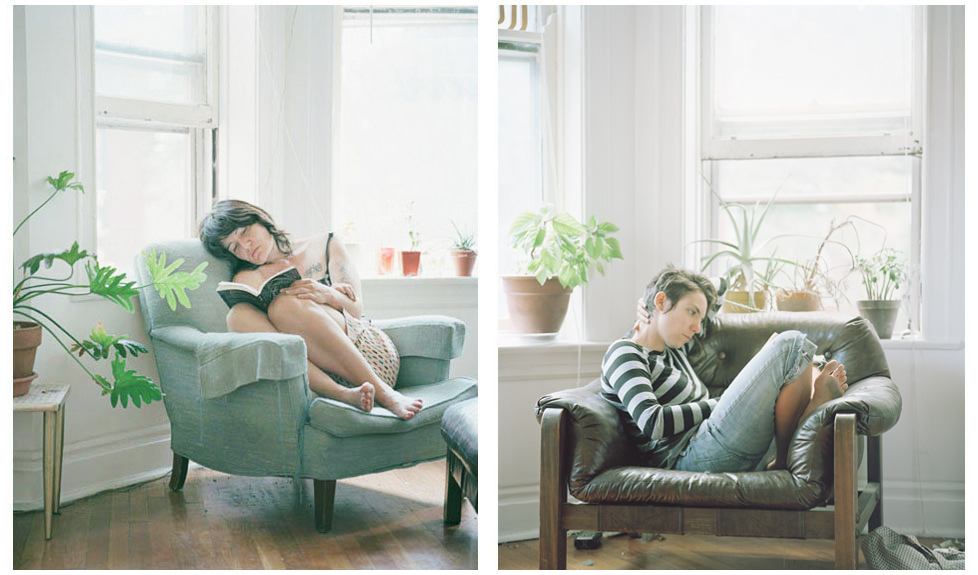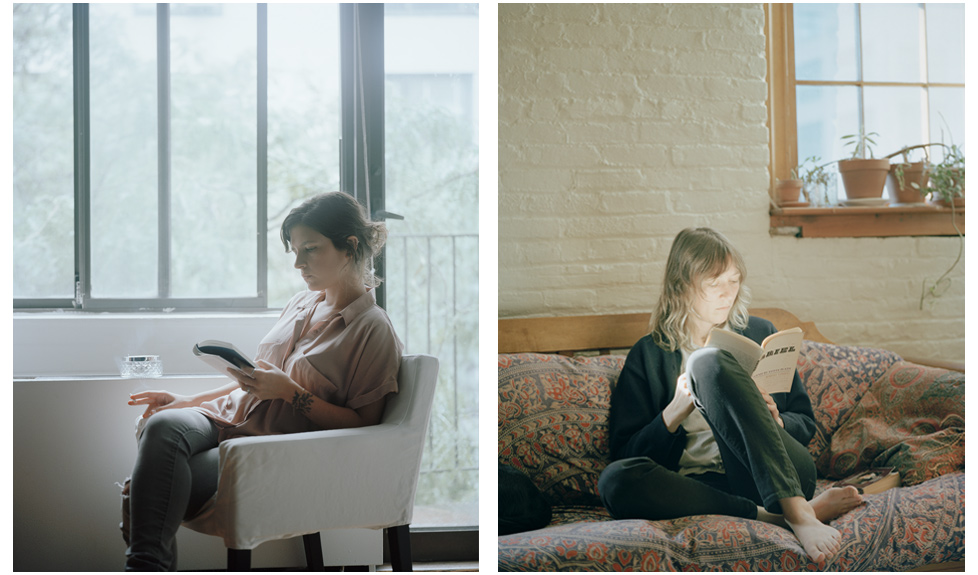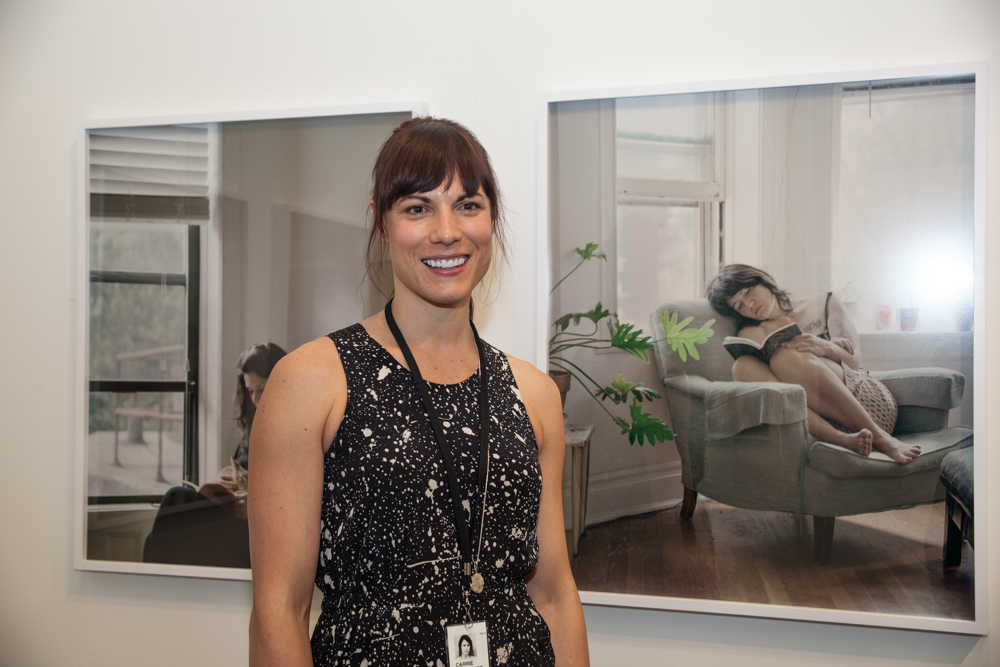At the Armory show this past week, photographer Carrie Schneider's work stood out. We were lucky enough to speak with the artist as well as Kendra Patrick, who wrote the essay below:



From the Inside || Carrie Schneider
There is an unmistakably voyeuristic feel to Carrie Schneider’s photographs. Even though the subjects are always aware of her presence, even when she is the photograph’s only subject, even when the subject isn’t human, there remains this overwhelming sensation that you’re peering into a secret space, one that should be accessible only to its owner. This uncomfortable feeling is the most fitting place to begin thinking about Carrie Schneider’s work. Delivered by a performative, imaginative practice, her affecting photos are staged in the Superego, documenting her exploration of and reflections on what life might look like from our psychological insides out.
Appealing about her body of work overall is the consistent conceptual depth. This is particularly noteworthy in light of the drastically waxing and waning emotional heaviness throughout, an aspect that could lead a viewer to consider the lighter pieces a break from her psychological exploration, and therefore inconsistent with one of the seminal principles of her practice.
Compare, for example, Reading Women, her latest series, to the older Family Videos. Despite the opposite weight and mood of their respective subject matter, the two series manage to match one another in intellectual complexity. Concentration is her psychological point of departure in Reading Women. Depicting female friends reading books of their own choice in their own homes, the two-year long series is a study on complete mental immersion. Sitting with each one for two hours with a long-lens camera and a video recorder, she documents each woman’s serene drift inward, to the place past self-awareness. She uses the disorienting Family Videos to try and understand physical intimacy in the nuclear family. Recognizing that touch is a necessary part of platonic, consanguineous relationships, often the first and most powerful that many of us experience, she wonders why/when/how sexual viability in the outside world changes those rules. Reenacting moments captured in her old family photographs – her father washing her hair in the shower, or, snuggling in her mother’s lap — she inspects the murky space in which our collective consciousness recategorizes contact we understand as natural and necessary as inappropriate or worse.
Tactically, she tends to shy away from shock, even in her more uncomfortable creations. Bypassing shock helps to preserve in tact each layer in each piece, crucial in work wherein solid ideas orbit intense and nebulous emotional centers. Thus, Schneider’s acknowledgement of the under-appreciation of woman authorship shines alongside her study of concentration in Reading Women. Her wonder at the wideness of the gender spectrum is as evident as her obsession with mimesis in Derelict Self. The ascent from any photo’s psychological depths, then, feels like a trip up the museum stairs as opposed to a climb up the rabbit hole’s walls. In easing us from the middle, she allows us to see and consider each layer, and form a clearer understanding of the whole.
Supporting all of the heady feelings and heavy ideas is Schneider’s creative practice – an evolving combination of the principles of the photographer and the performance artist. Whereas the photographer typically seeks the context, the subjects, and the shot in the world, the performer will create these for her audience. The photographer’s message is, “look around you,” the performer’s message is, “I am you.” Recession demonstrates: showing the artist’s face sliding down a glass storefront, her feet too far behind to support, her fingers gripping her shopping bags, she and her camera encapsulate 2009’s desperate, suffocating atmosphere.
Despite the cleverness of her process, it is her ongoing flirtation with idea of the “artist myth” that explodes her works’ profundity and potential. To construct, the artist uses her self — her body, her personal narrative, and her creative urges— to “connect [herself] to something timeless.” Despite her ambivalence about the value of an autobiographical legend — its too presumptive, too grandiose, she tells me – her mild adoption of the idea is intriguing, powerful enough. Incorporated into her practice, it looks like the hermit shacks she built and lit on fire for Burning House, at once a stunning contemplation of aloneness as it relates to time and a bombastic indulgence of her personal hermit fantasy. She critiques the self-centered goal to consume, personalize, and transcend our collective reality with her genuine desire to understand how we all contribute to and exist within it.
A complex marriage of practice and ideas, Carrie Schneider’s work is a graceful, provocative chronicling of our outside lives from the depths of our psyche.
Text by Kendra Patrick. More of her art criticism can be found at www.turbulenceartproject.com
Photographed by Tatiana Kiseleva


